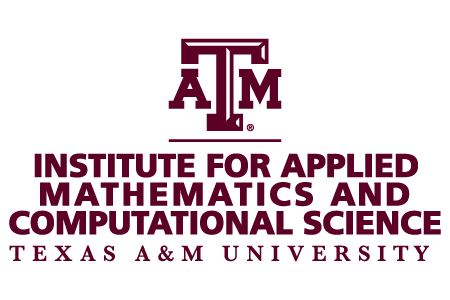Leader: Dr. Peter Kuchment
Co-Leader: Dr. Raymond Carroll
Research Core 2 addresses topics where parameters of a “non-transparent” system need to be estimated from external measurements with quantification of associated uncertainties.
Synergy with Other Research Cores
Inverse problems require efficient and fast forward simulations (Core 1). The uncertainties and errors which arise in forward simulations (Core 1) need to be considered in inverse problems. Inversion based on sequential data relies on data streaming issues, which are handled in Core 3. Core 2 is also a customer of Core 3 when historical data is used and data need to be obtained from data storage. Imaging and inversion also require visualization, which is part of Core 3.
Research Directions
Many major challenges of contemporary applied mathematics belong to the class of inverse problems. These are problems where researchers need to estimate parameters of a “non-transparent” system from external measurements. In some (passive) situations, one measures signals coming naturally from the system. This is the case in deep Earth imaging, for example, where the signals are seismic waves created by earthquakes, or in some types of medical diagnostic imaging, when γ-radiation is recorded from a radiopharmaceutical substance taken by a patient. A more subtle example of a passive inverse problem is cell gene expression data, where the system to recover is the network of mutual gene interactions.
In other, more common set-ups, one actively interrogates the internal structure of the system and measures its response. This is the case for many problems in geophysics, including oil prospecting, subsurface characterization, and sea bottom studies, where various (mostly acoustic) waves are created, and the reflected or transmitted response is recorded with the goal of understanding the geological structure. Sonar and radar imaging also belong to this class. The same is true for most known and newly developing types of medical tomography, where X-rays, ultrasound, or electromagnetic waves of various energies are sent and the transmitted or reflected signals are used to recover the internal structure of a patient’s body. Inverse problems are also central in industrial nondestructive testing, where internal structures need to be checked for cracks and other defects.
Mathematical methods – analytic, statistical, and numerical – are crucial for handling inverse problems. In fact, there is almost no inverse problem that does not involve highly sophisticated mathematics. It is also well established that inverse problems are extremely challenging due to their instability with respect to errors coming from measurement, hardware, mathematical approximations, and statistical noise. Limited and incomplete data aggravate the situation. Thus, significant mathematical expertise is required for handling these issues. This expertise is readily available at Texas A&M, where several mathematics, statistics, and engineering faculty members have made major contributions to various inverse problem areas.
Research Thrusts and Example Projects
Research Thrust 1: Deterministic inverse problems
This thrust area will address the following newly developing cheap and safe methods of imaging:
Mathematical methods of thermoacoustic and photoacoustic imaging
Mathematical methods of ultrasound-modulated optical, fluorescence, and acoustoelectric imaging
Research Thrust 2: Statistical inverse problems
Problems for deconvolution, functional data analysis and gene network modeling
Problems using multiscale spatial techniques
Example Project: Development of Bayesian function network models for dynamic gene expression data generated using microfabricated living cell arrays

